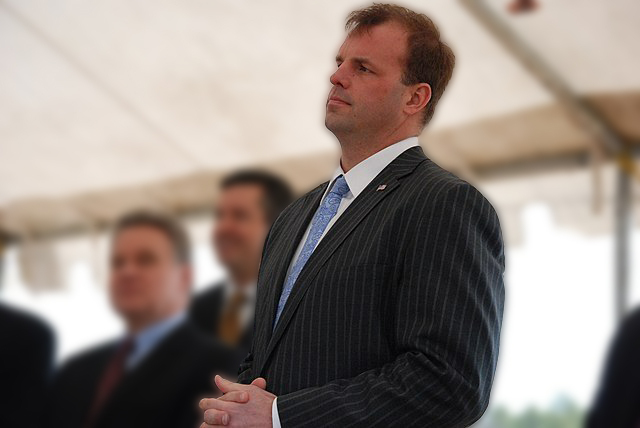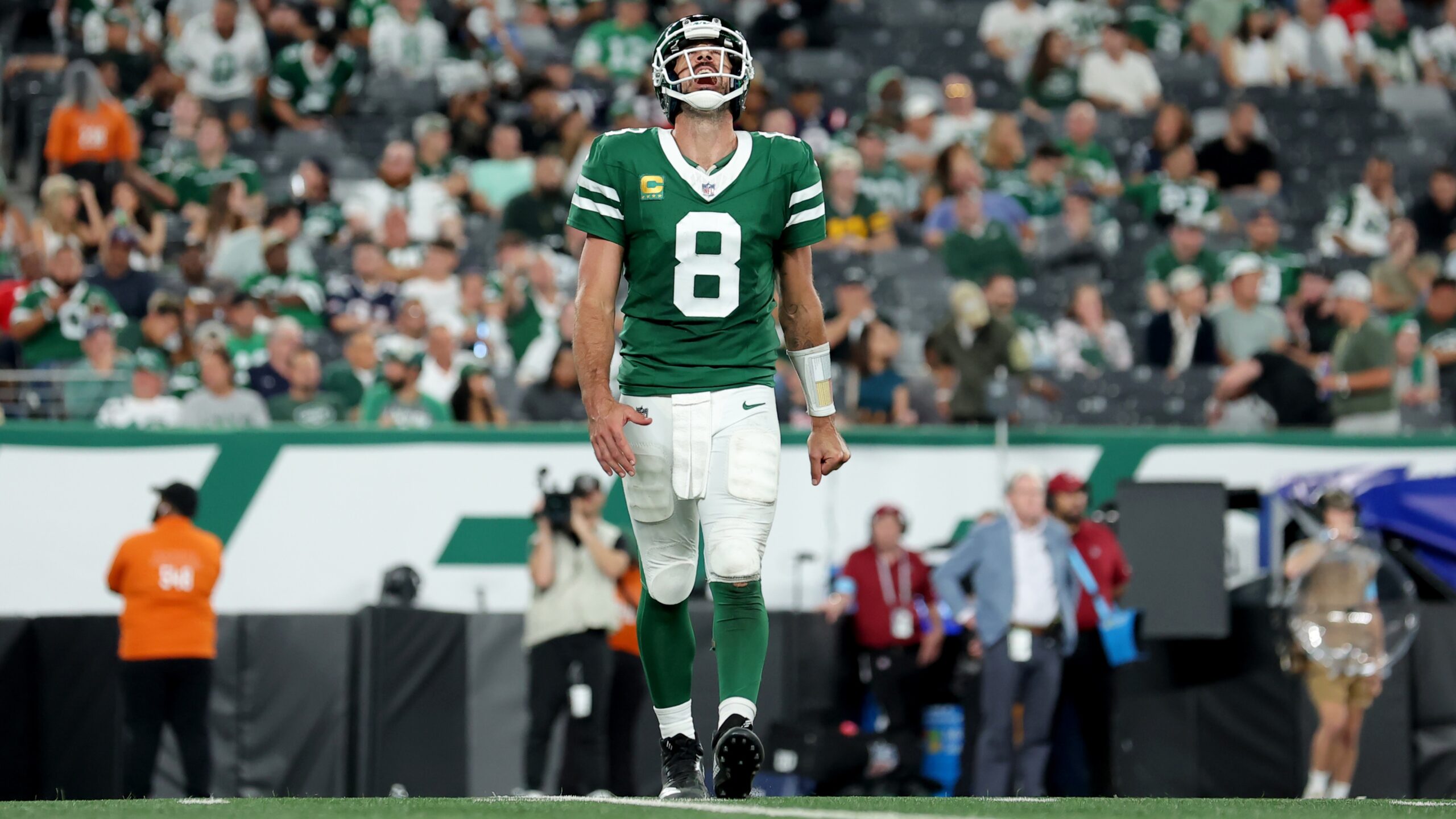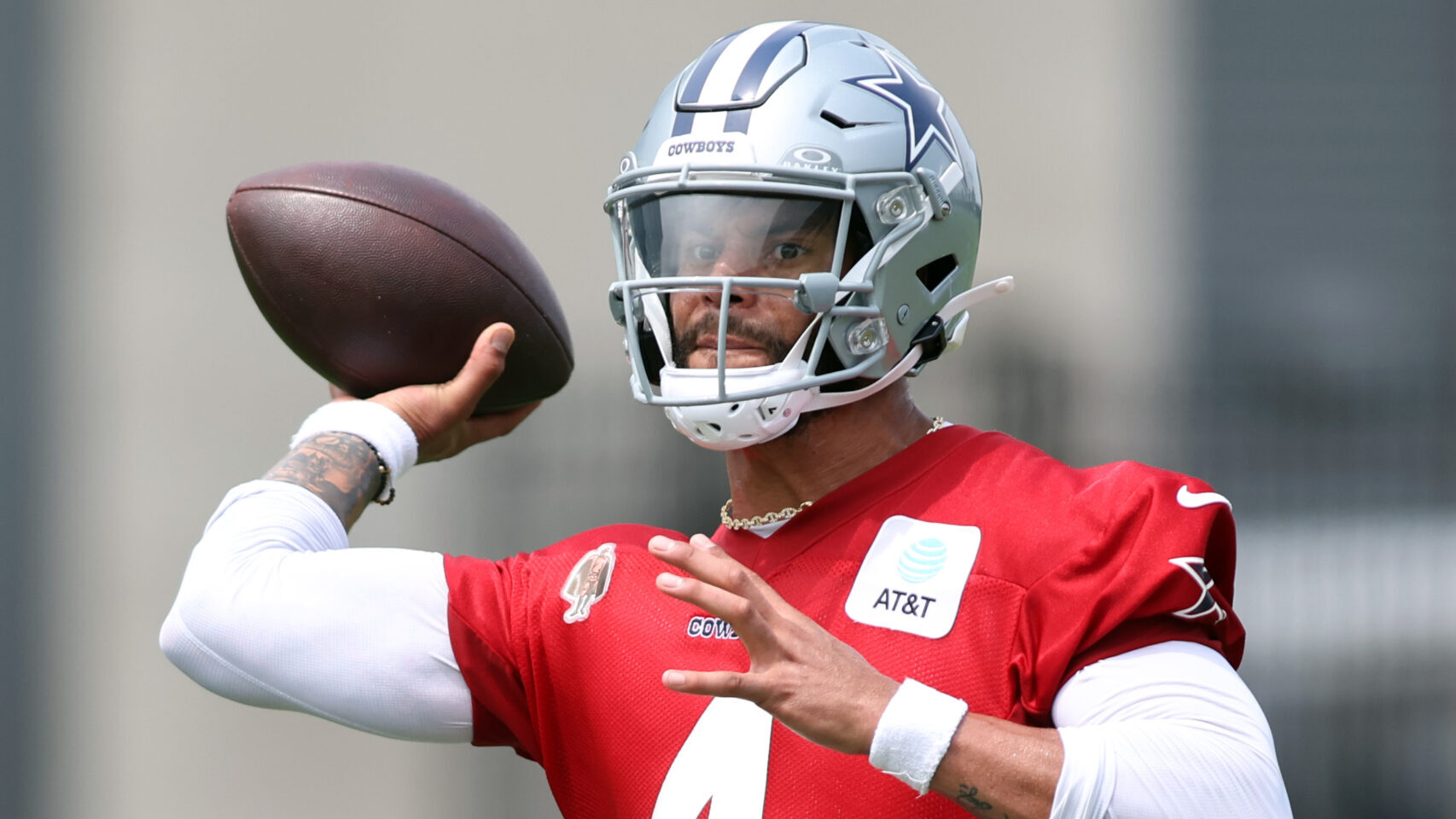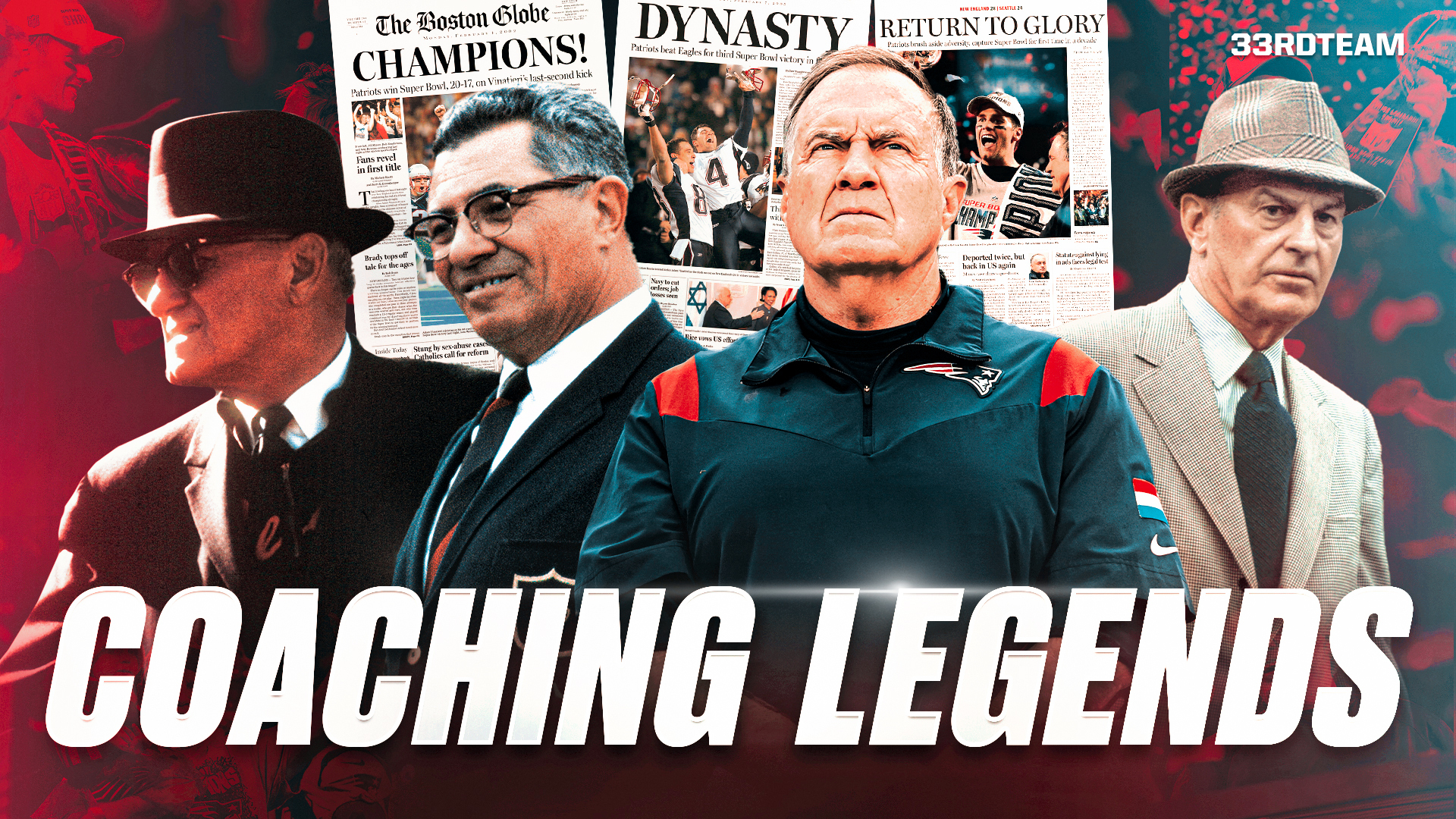Analysis
11/4/22
13 min read
Troy Vincent Q&A: How NFL Is Working to Prevent Concussions

Troy Vincent was a five-time Pro Bowl cornerback who played in the NFL for 16 years. He finished with 47 career interceptions, including a league-high seven in 2002 with the Eagles.
Vincent has been the NFL's executive vice president of football operations since 2014. Before that, he served as the league's director of player engagement for four years.
Vincent, 52, and his wife, Tommi, have been married for 28 years and have five children. They long have been active in battling domestic violence.
They chair the board of directors for the National Domestic Violence Hotline. Last month, Vincent gave the keynote address at the 12th annual Domestic Violence Education Symposium in Philadelphia.
The 33rd Team's Paul Domowitch sat down with Vincent recently at the NFL's Manhattan headquarters. This is Part 1 of a two-part Q&A.
>> Part 2: NFL's Minority-Hiring Problem
PD: The NFL and the players union have worked hard to reduce concussions and minimize the risk of long-term brain damage from them. It added an independent neurologist on the sideline of every game. It put certified trainers up in the booth to serve as concussion spotters. It toughened the return-to-play protocol for concussed players. And yet, Tua happened. What went wrong?
TV: When you deal with humans, we're all imperfect people. In this particular case, the findings were that there was a breakdown in process and, let's say human judgment. Hopefully we've learned from it, gotten better. We've come a long way with the neurologist on the sideline and the spotters upstairs. But we had a lapse. It gave us an opportunity to pause and go back and revisit something that we all felt was working and make it better.
PD: I expected a lot of finger-pointing from the union after the two incidents with Tua, but there wasn't any. The league and the union got together and quickly and painlessly expanded the concussion protocol. Ten years ago, the relationship between the league and the union was so divisive that Roger Goodell and (NFLPA executive director) DeMaurice Smith couldn't/wouldn't even sit next to each other at public gatherings. What's changed?
TV: The commissioner and D recognize that there's always going to be disagreements and points of alignment. But they both recognize that the game and the health and wellness of the players has to be our No. 1 priority. Without the players, there is no game. Healthy players allow the game to be exciting and competitive. It just shows you what we can do when we work together and how quickly we can get things done when the priority is the game and the player.
[bc_video video_id="6313318433112" account_id="6312875271001" player_id="default" embed="in-page" padding_top="56%" autoplay="" min_width="0px" playsinline="playsinline" picture_in_picture="" language_detection="" max_width="640px" mute="" width="100%" height="100%" aspect_ratio="16:9" sizing="responsive" ]
PD: Not long after the whole thing with Tua, you had a couple of very questionable roughing-the-passer calls that drew national attention. The conclusion seemed to be that the league had told the officials to be even more zealous than normal about protecting the quarterback. True?
TV: There was no change in philosophy. Ever since I've been around, the protection of the quarterback, particularly in the pocket, has been a priority. We all agree on the importance of a healthy quarterback. It's not that they shouldn't be tackled or hit. It's the unnecessary tactics we all have to be mindful of.
It's a different game today. It's a safer game and a better game. I grew up 15 miles from Veterans Stadium. In 1986-87, when I was in high school, I wanted to play for Buddy Ryan. I wanted to be part of what I saw was happening at Veterans Stadium each and every week with Reggie White and Clyde Simons and that whole group. That was the body bag era. We're not there anymore. The way I was taught the game — to inflict harm whenever possible — we're not there anymore. We've learned too much. It's not in the best interest of the game or the people that play it.
PD: In a previous interview on ESPN right after the roughing calls on the Falcons' Grady Jarrett and the Chiefs' Chris Jones, you said that the rules support the two calls. But you also said the one on Jarrett, who was called for slinging Brady, was one ‘you'd not like to see, but philosophically can support.' Please explain.
[bc_video video_id="6313535620112" account_id="6312875271001" player_id="default" embed="in-page" padding_top="56%" autoplay="" min_width="0px" playsinline="playsinline" picture_in_picture="" language_detection="" max_width="640px" mute="" width="100%" height="100%" aspect_ratio="16:9" sizing="responsive" ]
TV: Article 11 on roughing the passer, it's the one out of 180 rules that allows the referee the latitude to make that judgment call on what he or she sees. The quality and popularity of the game today is because of the quarterbacks. The last two years have been two of the most prolific in the history of the game. Ninety-one out of 100 of the top TV programs last year were NFL games. Why? The quality of the quarterbacks.
When people go to Lincoln Financial Field (in Philadelphia), they want to the see Jalen (Hurts) generate points. As a former defensive player, I'm not getting weak or soft. The quarterback is afforded protection in the pocket. When he gets outside that pocket and becomes a runner, all bets are off. So, he has to help us help him. When you want to take it upon yourself to try and be the next Jim Brown or Marshall Faulk, there's going to be a price to be paid for that.
PD: While much was made of those two roughing penalties, the fact of the matter is roughing calls are actually down this year. Down significantly.
TV: Coaches will ask me or Jon (Runyan, the league's vice president of rules and policy administration), what am I supposed to tell my player. What vernacular should I be using? Well, what's the best teacher? Video. We send out video every week to players and coaches on the right way to tackle and hit quarterbacks and everything else. We let the players see his peers. You look at (the Raiders' Maxx) Crosby or (the Eagles') Fletcher Cox. There's a lot of good defensive linemen that are sacking the quarterback, making big hits, strip fumbles, without some of the unnecessary things. To show them that their peers do it, it gives them a picture that they can, too. And still be dominant.
PD: The league added defensive pass interference to the instant-replay list a couple of years ago on an experimental basis. It was deep-sixed after one year. Some have suggested roughing-the-passer calls should be reviewable. Safe to say you're not in favor of that?
TV: It's something I would not recommend to the [competition] committee or the commissioner. Why? You have 45,000 scrimmage plays. You're going to have a few missed calls. In the first six weeks this season, we had over 17,000 scrimmage plays. There were only three plays that people were talking about. When you look for perfection you find trouble.
Putting DPI in replay was not good for the game. It wasn't good for fan experience. It didn't have great results. When you start dumping everything into replay, our officials have told us you stop officiating. Because they have these lenses above them that are going to call it the way they see it anyway.
PD: Since becoming the league's football operations chief, you've hired a lot of ex-players, including your former Eagles' teammate, Jon Runyan. You've said you want to bring football back into the business.
TV: Yes. This is, after all, the business of football. This is the greatest game played by the greatest players and coached by the greatest coaches. The more you have those that have had that experience, it allows us to move the business of football forward.
Oftentimes, teams will ask, who is making these decisions. Who came up with this? Are these just guys and women in suits and ties who don't know what it's like to be here or be on the field? So, I've always been an advocate of player involvement at the league level.

PD: Jon's hiring in 2015 raised more than a few eyebrows. He regularly was on NFL's Dirtiest Players lists when he played. And you made him your duke of discipline.
TV: I get asked that all the time. Why Jon? I would say this: In my 15 years as a player, I never saw a tougher guy. Jon was my teammate in Philadelphia. He was the one player in the locker room that didn't care where you were from. He didn't care about your race. Didn't care your class. He wasn't going to take any shit from you.
You talk about nasty, dirty, hard-hat, brown-paper-bag guys. That was Jon. Every freaking Sunday, that sucker came to play. It wasn't always, as we would say today, what we want. But he earned respect. All of the (fineable) stuff that we see, in many cases, he created it. He started it. So you're not pulling anything over on him.
And his time in public service (as a two-term U.S. Congressman) told you he was a process-oriented individual that understood, here's policy. It's black and white. That's what you want. You get coaches that want to push the envelope. You get players that want to push the envelope. You want somebody on the other side of that table who won't be swayed by title or reputation or what you did previously. That's Jon. He's black and white.
PD: Your own post-playing career is interesting. You had served as NFLPA president for several years when you were playing. You were the frontrunner to eventually replace Gene Upshaw as the head of the players union. Then you lost the election to D and eventually end up on the other side of the table, working for the league, first as the director of player engagement, and then the last eight years as executive VP of football operations. Surprised the way things turned out?
TV: To be able to serve the game in this capacity, it's much broader than the way I was thinking about it when I was running for [NFLPA director]. Then, it was really about the player. Hours, wages, working conditions. His working rights.
When the commissioner gave me the opportunity [to be director of player engagement] when Mike Haynes was ill, it allowed me to be a true contributor. I don't miss the game at all. But to still be able to touch the game, still be a contributor of the game in my capacity, it's been a great honor. The game has done more for me than I can ever do for it. I mean that sincerely.
PD: You and your family live in Virginia and you work in New York City. That's not easy. It means being away from your family a lot. Your two youngest children will be going to college next year. You're 52 years old. What's in your future?
TV: Tommi and I, we've always had the mindset, we do what we have to do now so that we can do what we want to do later on. I mentioned to the commissioner when he hired me that I'm going to serve him and I'm going to serve the 32 clubs because they served me. I had an opportunity to play for four of them (Miami, Philadelphia, Buffalo and Washington).
The sacrifices that my wife and our family have made, we've made it work. My wife has allowed me to do what I love doing. Being a part of the game of football and everything that's associated with it. I go to sleep with it. I wake up with it. To talk about the game every day and find ways to grow it. I told the commissioner, I'm here to serve alongside you until the time when my wife tells me it's time to come home.
PD: You and Tommi have been involved in the fight against domestic violence for many years, going back to your days as a player. The two of you are actively involved with several domestic violence organizations. You do fundraising and speaking. You work with the Women Against Abuse family shelter in Philly. How did that all come about?
TV: That is my full purpose. It's our daily work. My daughter, who was a sexual assault victim, also is involved. That pain that I felt as a 6- or 7-year-old when I was first introduced to it. That wasn't the term back them. My mom was just being beaten or being hospitalized. That occurred all through my childhood and teenage years until I was in high school.
I made the commitment to my mom that I would never be what I saw. That was my first commitment. To say I would never do what I saw being done to her — I can't even imagine a child visiting their mother in a hospital unit where you can't recognize her because it looks like she's been in a car accident. She was beaten time after time after time. Beaten to a pulp. I made more visits to Mercer (N.J.) Hospital than I can ever recall.
So I made that commitment to my mother at 16, and I get married at 21 and come to realize that my wife is a domestic violence survivor as well. Both of us from Trenton. So, obviously there was this pattern of behavior happening in the community that no one was stepping up to, no one was saying no, this can't be tolerated.
As I said, it's become our daily work. Myself in particular, it's about challenging men to do more. Because the statistics haven't changed. And that's disturbing. We live in a world of data. What does the data say? Let the data lead us. Well, the data here as it pertains to women and girls being sexually assaulted and beaten, it's a tragedy. And we're allowing it to happen in our presence. Because silence means consent. It means I'm OK with what I'm seeing and what I'm hearing because I'm not doing anything about it. Men are the vast majority of the perpetrators. And yet we allow it to happen in our presence and turn a blind eye to it.
I speak on it. I do a lot of education from prevention to intervention. Work with the domestic abuse hotline. Work with a lot of policy-makers to try and change the situation.
I've worked closely with Joe Torre, who's long been a domestic-violence crusader. When I came into professional sports, it was really difficult to identify another sport's individual of influence that was in this particular space. I heard about Joe and his work with the Safe At Home shelters. It was his mission.
I'm just trying to talk to young men and persuade them to think differently about what we see. The data and the numbers, we've got problems.







